Indian armor and weapons (part 1)
"With chariots and elephants, and horsemen, and many ships"
(The first book of Maccabean 1: 17)
"He does not count diamonds in stone caves, do not count pearls in the noonday sea ..." - this was the opinion of Europeans about the riches of India for many hundreds of years. However, the main wealth of India was not at all precious stones, but in iron! Back in the times of Alexander the Great, Indian steel was valued very highly and was used to manufacture only the best weapons. Famous centers of weapons production in the medieval East were Bukhara and Damascus, but ... they received metal for it from India. It was the ancient Indians who seized the secret of the production of damask steel, known in Europe under the name Damascus. They also managed to tame and use elephants in battles, and just like their horses, they dressed them in armor of chain mail and metal plates!
War elephant. Philadelphia Museum of Art.
In India, produced several grades of steel of different quality. Steel was used to manufacture various types of weapons, which were then exported not only to the markets of the East, but also to Europe. Many types of weapons were inherent only in this country and were not used anywhere else. If they were bought, they were considered as a wonder. Chakra, a flat throwing disc used in India right up to the middle of the 19th century, was very dangerous in capable hands. The outer edge of the disc was razor sharp, and the edges of its inner hole were blunt. When throwing, the chakra was strenuously spun around the index finger and thrown into the target with all its scope. After that, the chakra flew with such force that at a distance of 20 – 30 m could cut the trunk of green bamboo 2 thick, see. Sikh warriors wore chakras on their turbans at once in several pieces, which also protected them from above by saber impact. Damask chakras were often decorated with a gold notch and inscriptions of religious content were made on them.
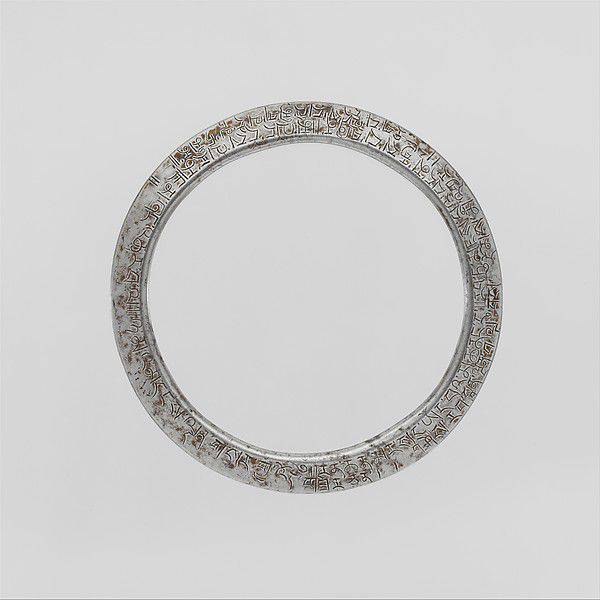
Chakra. Indian throwing ring. (Metropolitan Museum, New York)
In addition to the usual daggers, the Indians used the kutar very widely - a dagger with a handle perpendicular to its longitudinal axis. From above and below it had two parallel plates, ensuring the correct position of the weapon and at the same time protecting the hand from another's strike. Sometimes they used a third wide plate that covered the rear of the brush. The handle was held in a fist, and the blade was like an extension of the hand, so that the blow was directed by stronger muscles of the forearm, not the wrist. It turned out that the blade was an extension of the arm itself, so that they could strike from various positions, not only standing, but even lying prone. Kutars had both two and three blades (the last could stick out in different directions!), Have sliding blades and curves for every taste!
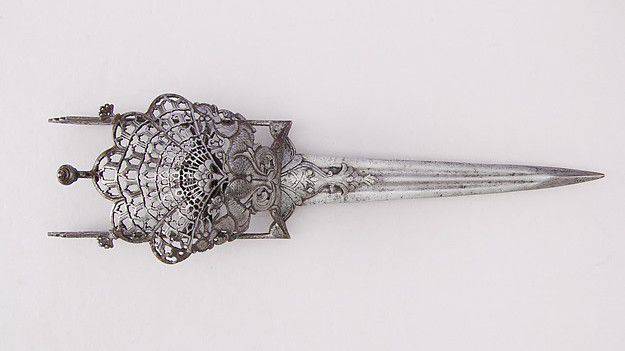
Kutar with guard to protect the hands of the XVI. Weight 629,4 (Metropolitan Museum, New York)
In India, no matter what museum you go in - kutara at every turn!
A very original weapon was a pair of antelope horns, which had steel tips and joined on the same handle together with the guard to protect the arm, with tips in different directions. Nepal was the birthplace of the knife-shaped kukri. It was originally used to cut its way through the jungle, but then it fell into the arsenal of Nepalese Gurkha warriors.
Not far from India, on the island of Java was born another original blade - Chris. It is believed that the first crises were made in Java by a legendary warrior named Juan Tuah in the 14th century. Later, when Muslims invaded Java and began to persist in planting Islam there, they also became acquainted with this weapon. Having appreciated these unusual daggers, the invaders began to use them themselves.

Who and why could in the XVIII century. Do I need such a sword? (Metropolitan Museum, New York)
The blades of the first crises were short (15 – 25 cm), straight and thin, and entirely made of meteoric iron. Later they were somewhat lengthened and made wavy (flame-shaped), which facilitated the penetration of arms between the bones and tendons. The number of waves varied (from 3 to 25), but it was always odd. Each set of convolutions had its own meaning, for example, three waves meant fire, five were associated with five elements, and the absence of bends expressed the idea of unity and concentration of spiritual energy.
Malay kris. (Museum in Yogyakarta, Indonesia)
The blade, made of an alloy of iron and meteorite nickel, consisted of several repeatedly forged layers of steel. The moir-like pattern on its surface (pamor) formed during processing of the product with vegetable acids, so that the grains of resistant nickel clearly stood out against the background of deeply etched iron, gave the weapon a special value.
The double-edged blade had a sharp asymmetrical expansion near the guard (ganja), often decorated with a slit or ornamental notch. Kris handle was made of wood, horn, ivory, silver or gold and was carved, with a more or less sharp bend at the end. A characteristic feature of the kris was that his handle was not fixed and easily turned on the shank.
When the weapon was grabbed, the handle's bend was located on the little side of the palm, and the upper part of the guard covered the root of the index finger, the tip of which, together with the tip of the thumb, squeezed the blade base near the bottom of the ganja. Tactics of applying Chris meant quick injection and stretching. As for the "poisoned" crises, they were prepared very simply. They took the dried seeds of the dope, opium, mercury and white arsenic, carefully mixed everything and pounded in a mortar, after which the blade was covered with this composition.
Gradually, the length of the kris began to reach 100 cm, so in fact it was no longer a dagger, but a sword. All in all, in Southeast Asia, up to the present, there are more than 100 varieties of this type of weapon.
The sword of the hand is on the right.
In general, the cold steel of India and the lands closely located to it was extremely diverse. Like many other peoples of Eurasia, the national weapon of the Hindus was the straight sword of the hand. But they also used their own types of sabers, distinguished by a relatively small curvature of the wide blade, starting from the very base of the blade. Excellent craftsmen of forging, the Indians could make blades that had a slot on the blade, and pearls were inserted into it, which rolled freely in it and did not fall out! You can imagine the impression that they made, rolling in the slot, on an almost black blade from the Indian damask. No less rich and pretentious were the arms of Indian sabers. Moreover, unlike Turkish and Persian, they had a cup-like guard to protect their hands. Interestingly, the presence of the guard was also characteristic of other types of Indian weapons, including even such traditional ones as mace and shestoper.
Shamshir is a saber of the Iranian-Indian type, beginning of the XIX century. from Lucknow, Uttar Pradesh. Length 98,43, see. (Metropolitan Museum, New York)
Very curious were the Indian chain mail with a set of steel plates in front and behind, as well as helmets, which in India in the XVI – XVIII centuries. Often they were made from separate segmented plates connected by chain mail. Kolchugi, judging by the miniatures that have reached us, were both with long and with short sleeves to the elbow. In this case, they are often supplemented with braces and elbow pads, often covering the entire brush.
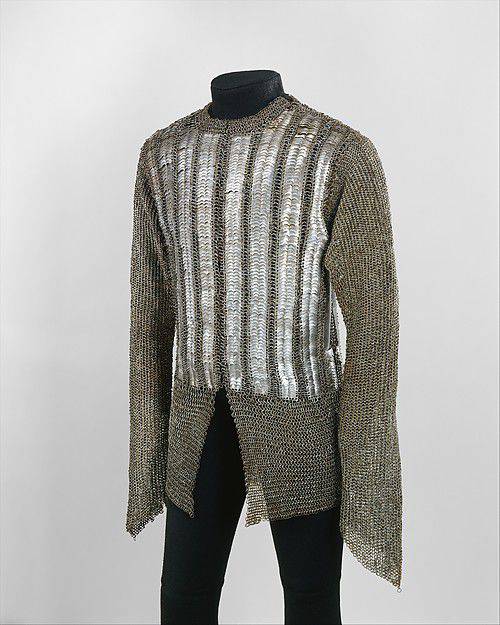
Bakhterets XVII. (Metropolitan Museum, New York)
Horse warriors often wore elegant bright robes over the chain mail, many of which had gold-plated steel discs on their chest as additional protection. Knee pads, hornbags, and leggings (chain mail or in the form of solid metal plates) were used to protect the legs. However, in India, metal protective footwear (as in other countries of the East), in contrast to the protective footwear of the Knights Europeans, did not spread.
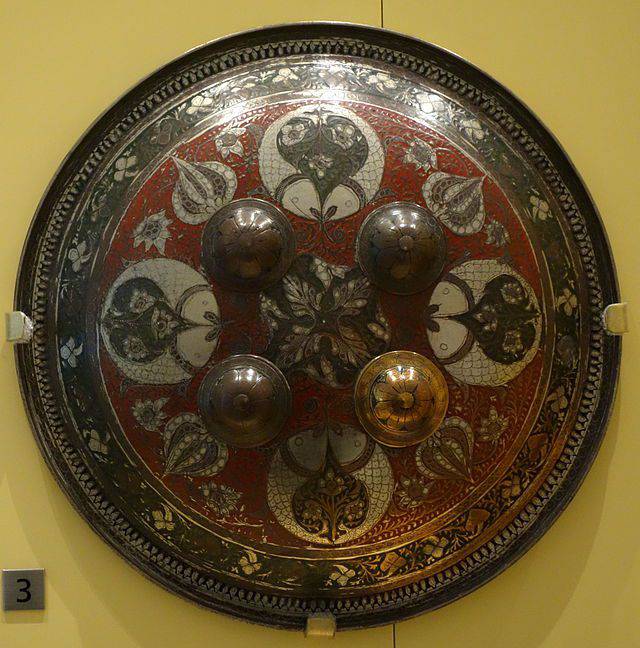
Indian shield (dhal) XIX century. from Lucknow, Uttar Pradesh. (Royal Ontario Museum, Canada)
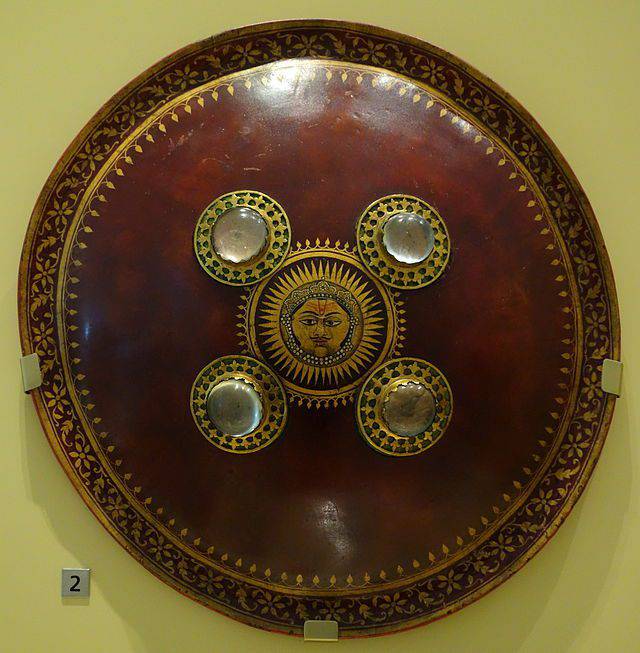
Indian shield (dhal) from Rajasthan, XVIII century. Made from rhino skin and embellished with rock crystal umbrons. (Royal Ontario Museum, Canada)
It turns out that in India, as well as in all other places, right up to the 18th century, the armament of a heavily armed cavalry was purely knightly, although again not as heavy as it was in Europe until the 16th century. It also widely used horse armor, or, at least, cloth blankets, which in this case were supplemented with a metal mask.
The kichin horse shells were usually exuded from the skin and covered with a cloth, or it was lamellar or laminary shells gathered from metal plates. As for horse armor, in India, despite the heat, they were popular until the XVII century. In any case, from the memories of Afanasiy Nikitin and some other travelers it can be understood that they saw the cavalry there "fully dressed in armor", and horse masks on horses were trimmed with silver, and "most of them are gilded", and the blankets are sewn from multicolored silk, velvet, satin and "Damascus fabrics".
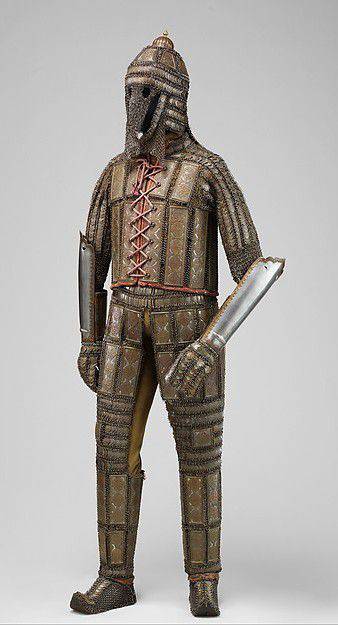
Armor from India XVIII - XIX centuries. (Metropolitan Museum, New York)
Sophisticated oriental onions were also well known in India. But due to the characteristics of the Indian climate - very humid and hot - such onions were not widely spread. Having excellent damask steel, the Indians made small bows out of it, suitable for horsemen, and bows for the infantrymen were bamboo in the manner of solid wood bows of English shooters. Indian infantry XVI – XVII centuries. Long-barreled wicker muskets, equipped with bipods for shooting convenience, were already quite widely used, but they were constantly lacking, since it was extremely difficult to produce them in large numbers in handicraft production.
Indian bow and arrows.
In addition, the use of firearms is not very well consistent with the moral and ethical views of the Indians. So, in one of the Sanskrit texts of the time it was said: "A commander should not use any guile (meanness) in war, should not use poisoned arrows, nor large or small fire implements, nor any fire-fighting devices."
A feature of the Indian strike weapons was the presence of a guard, even on shestopery and maces.
As for the chivalrous position of the Indian soldiers who served in the heavily armed cavalry, everything here was exactly the same as in other regions of Eurasia. For the warrior caste, Amaram land plots were allocated, which were given for life under the condition that a certain number of well-armed soldiers were put up. In turn, these large land plots, their owners in parts transferred to their vassals, and they received income from the peasants. The actual independence of the great princes led to endless strife between them, which foreign conquerors constantly used. Only one of them - the Samanid ruler Muhmud of Ghazni in one of the campaigns to the north of India captured 57 thousands of slaves and 350 war elephants, not counting gold, precious stones and other prey.
Armor for the rider and horse. Iran, India. Around 1450 - 1550 (Metropolitan Museum, New York)
In 1389, India was greatly affected by the invasion of Tamerlane, who captured and plundered Delhi, and captured many of its inhabitants.
Swords are straight, but with a blade somewhat curved at the end. For medieval India, this is normal!
But the power of the Delhi sultans delivered the most severe blow to their own vassals, who, because of their dissatisfaction with the rule of Sultan Ibrahim Lodi in 1525, called for the help of the ruler of Kabul Sultan Babur.
A descendant of Tamerlane and the experienced commander Babur himself defeated Ibrahim Shah and seized his throne. The decisive battle between them took place at Panipat 21 on April 1526. Despite the numerical superiority of the Delhi army, which also had 100 war elephants, Babur won a full victory thanks to the skillful use of his numerous artillery. Moreover, to protect the cannons and musketeers, Babur skillfully used fortifications from wagons, which for this were tied with belts.
As befits an orthodox Muslim, Babur ascribed his successes to the will of Allah: “As I hoped,” he wrote in his notes “Babur-name,” the great Lord did not make us suffer and endure in vain and helped us overcome a strong enemy and conquer vast state like Hindustan. "
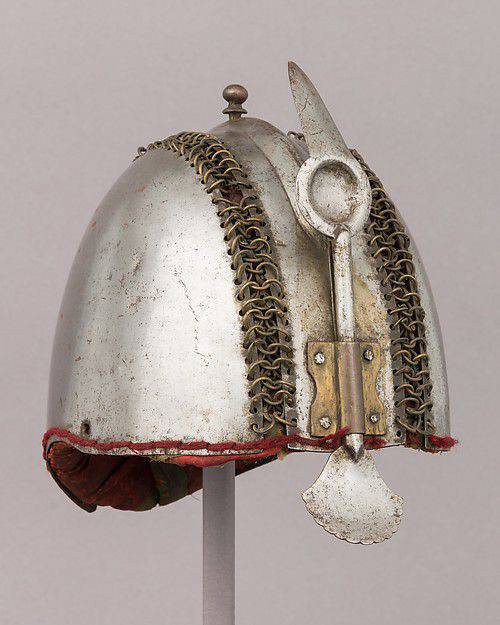
1700 Helmet (Metropolitan Museum, New York)
Since Babur came to India from the territory then called Mogulistan, and he also considered himself a descendant of Genghis Khan, the Indians began to call him and all those who came with him, Mogul, and his state the Great Mogul state.
The cavalry, as before, remained the main striking force of the Mughal army, therefore, to prevent the feudal lords from embarrassment, who did not want to put the required number of cavalry warriors and appropriating the salaries due to them, one of the rulers introduced mandatory branding of horses. Now the troops to be displayed must necessarily have horses with the brand of every sovereign prince.
After 30 years, the Indians rebelled, and again in the second battle of Panipat 5 on November 1556, their army consisting of 100 000 people and 1500 fighting elephants was defeated by Sultan Akbar’s 20 army. The outcome of the battle, and this time decided to prevail Mughal artillery. Under fire from the guns, the Mughal attacks on the elephants turned to flee and crushed the ranks of the Hindu forces, which led them to utter defeat.
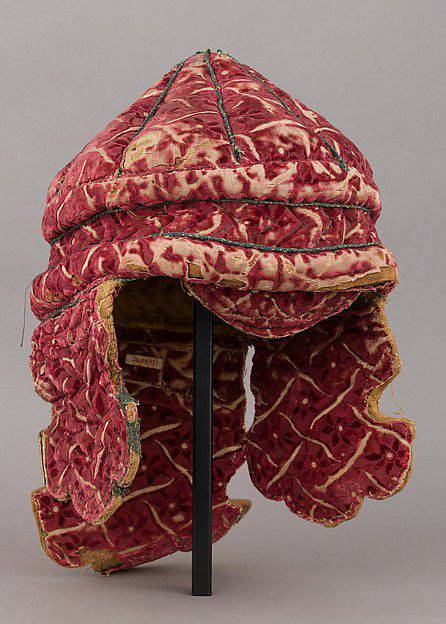
Helmet made of cloth with a gasket of the XVIII century. Weight 598, 2 g. (Metropolitan Museum, New York)
It was the artillery that dominated the battlefields in the internecine wars of the claimants to the throne in the Mughal Empire, which the Indian historian Sarkar described as "a sword dispute with gun powder." And French doctor Bernier (1625 –1688), who spent 12 years in India, in his book “History the last political upheavals in the state of the Great Mogul "wrote:" He (Aurangzeb) ordered all the guns to be built in the first row, linking them one with another with chains, in order to block the path of cavalry. Behind the cannons, he built a large number of light camels, tied at their front small cannons the size of a double musket ... so that the person sitting on the camel's back can load and unload these cannons without going down to the ground ... "
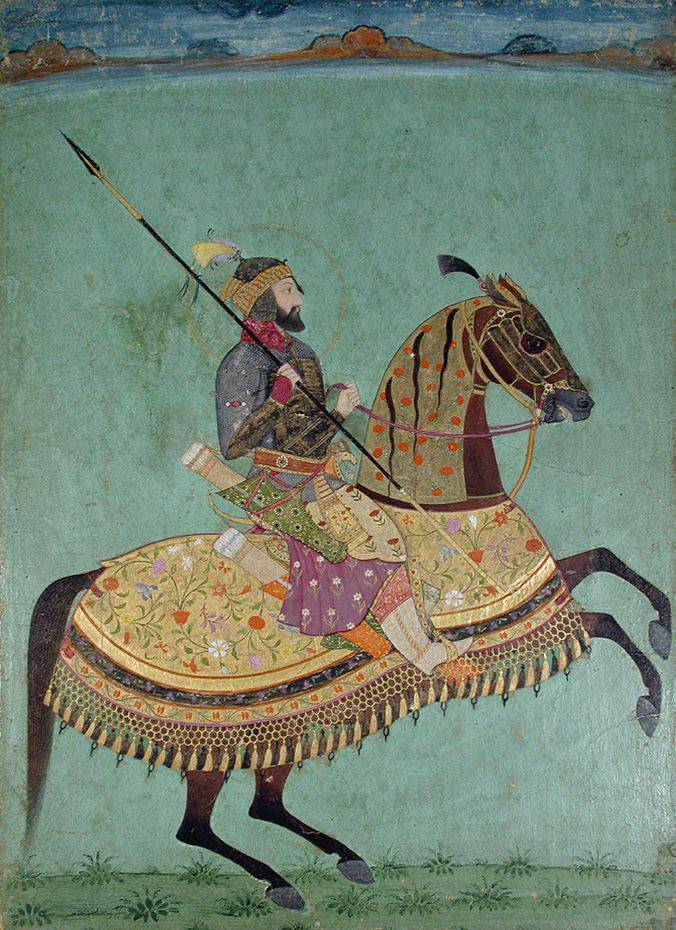
Portrait of Shah Aurangzeb on horseback. Around 1650 (San Diego Museum of Art).
A few pages further, Bernier detailed the organization of the then Indian artillery: “Artillery is divided into two kinds. The first is large or heavy artillery, the second is light, or, as they call it, stepmen. As for heavy artillery, I recall that ... this artillery consisted of 70 cannons, mostly cast iron ... mostly cast, some of which are so heavy that you need 20 pairs of bulls to haul them, and to attach some elephants so that they help the bulls, pushing and dragging the wheels of the carts with their trunks and heads, when the guns get stuck or when you have to climb a steep mountain ...
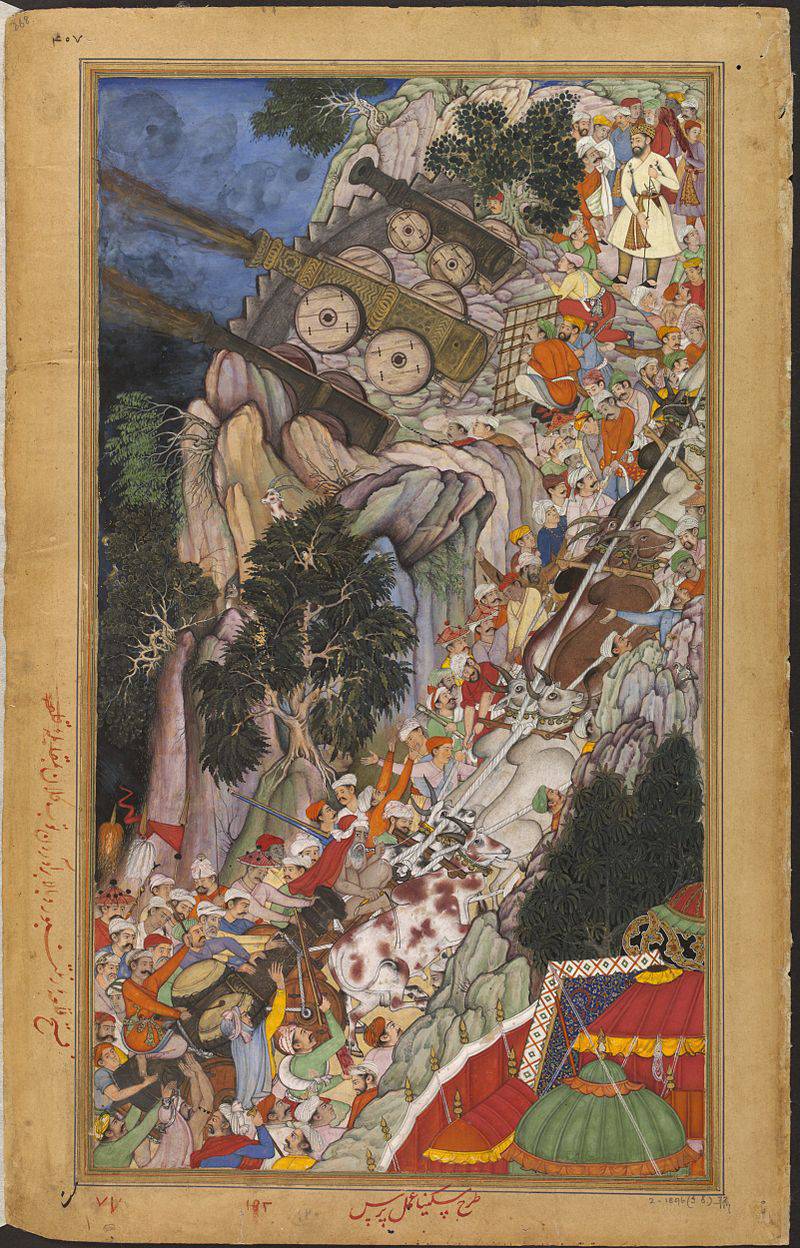
Siege of Rathambor fortress. Akbarneme. OK. 1590 (Victoria and Albert Museum, London).
The aspiring artillery, which seemed ... very elegant and well-trained, consisted of 50 or 60 small field bronze guns, each placed on a small cart, well-made and well-painted, with a trunk in front and behind for projectiles; she was driven by two beautiful horses; the driver was driving her like a stroller; it was decorated with small red ribbons, and each had a third horse, led by the coachman-gunner, led by the bridles ... ". “The artillery triumphed over the cavalry here,” concluded Bernier.
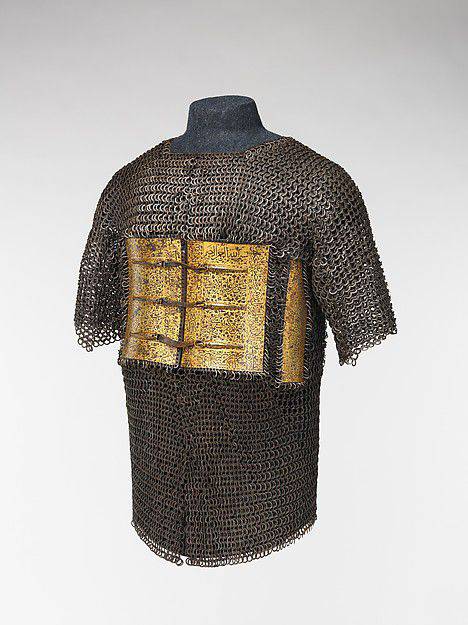
Yushman. India 1632 - 1633 g. Weight 10,7 kg. (Metropolitan Museum, New York)
Thus, it turns out such a curious moment as the role of the animals themselves in the battle and the associated specificity of their combat use. It is clear why the horse became the main fighting animal of man: it is strong enough to carry a heavily armed rider, and with appropriate training it can very well help him in battle. By the way, it was the Indians who were the first to start training horses in the East. The earliest written information on the care and training of horses was left to us by Kikkuli, the horse stable of the Hittite king around 1400 BC. er The surviving texts are written in Hittite writings and the Babylonian cuneiform on clay tablets and contain detailed instructions on how to tame horses, care for them and harness the chariots. However, some specific terms and figures suggest that many of these data in the Kikkuli treatise were borrowed by the Hittites from the Indians.
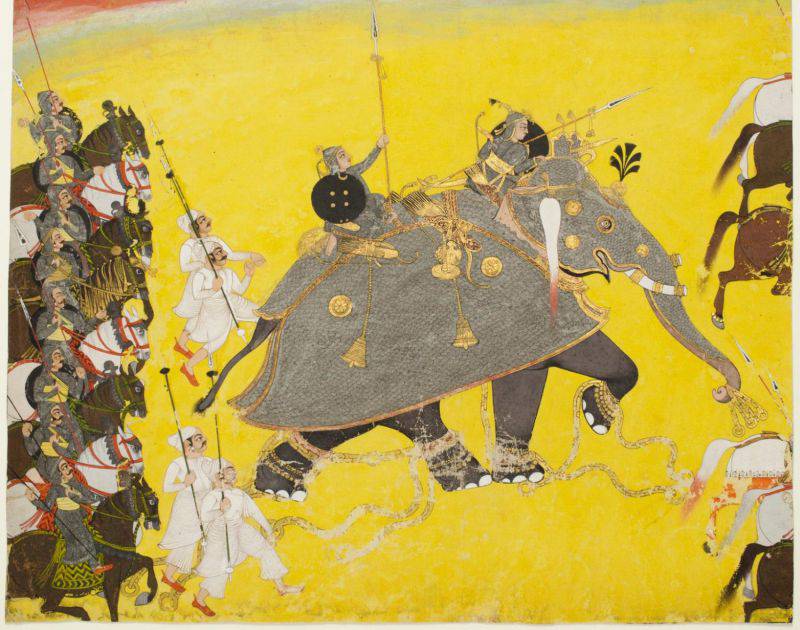
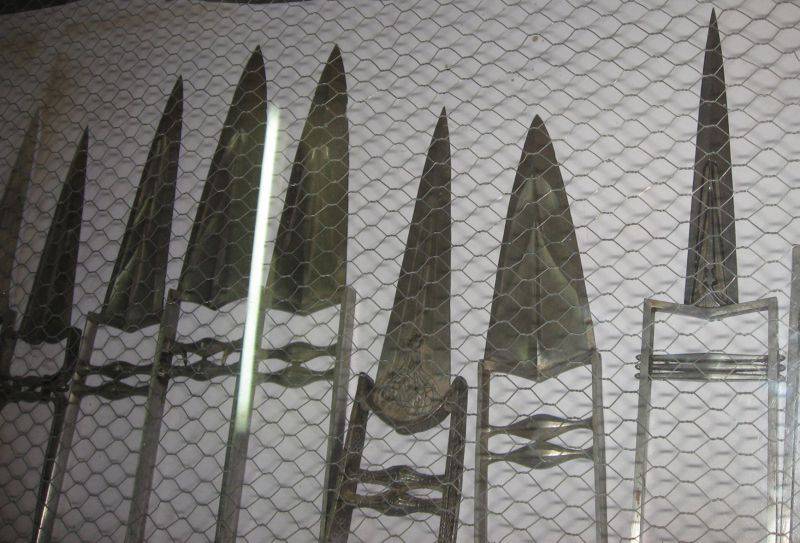

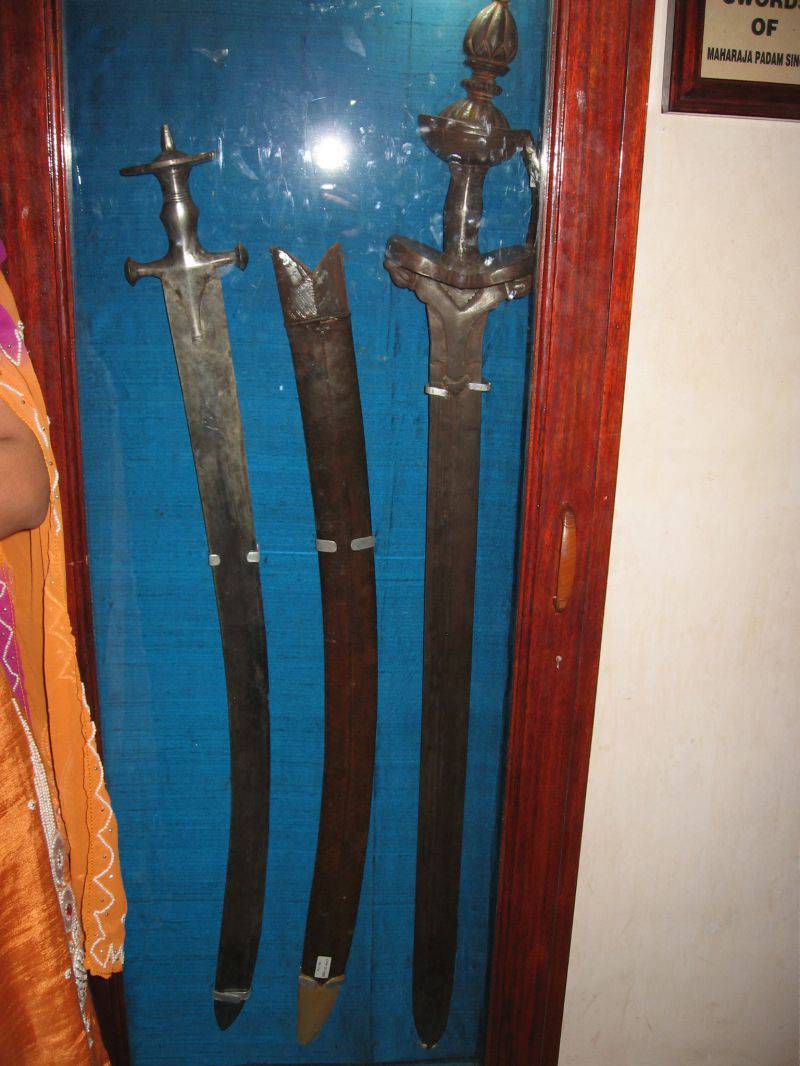
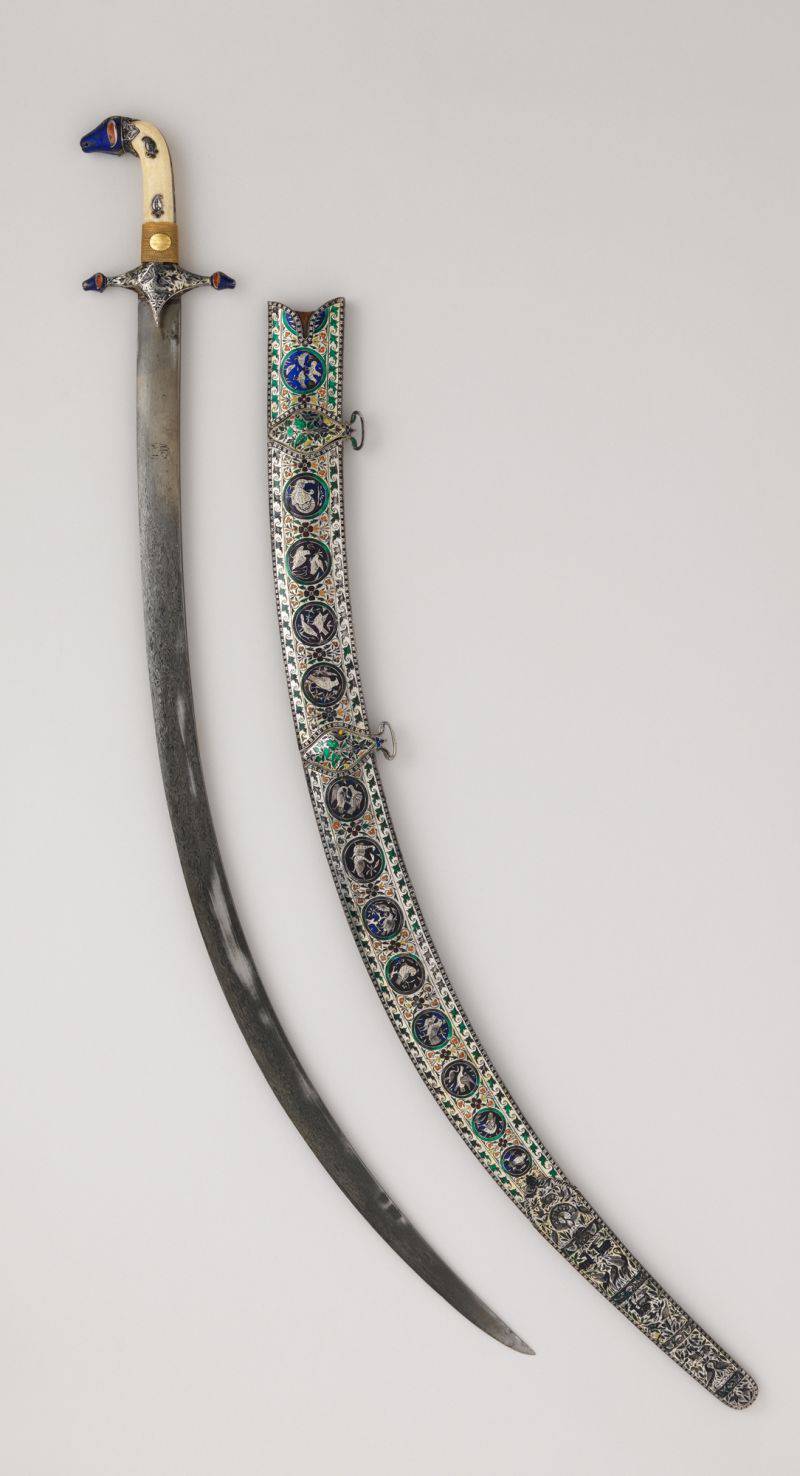
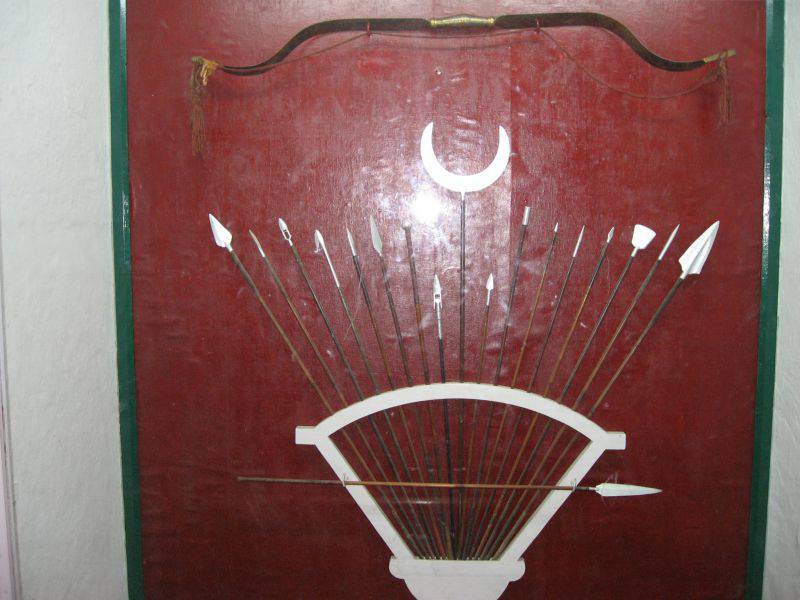
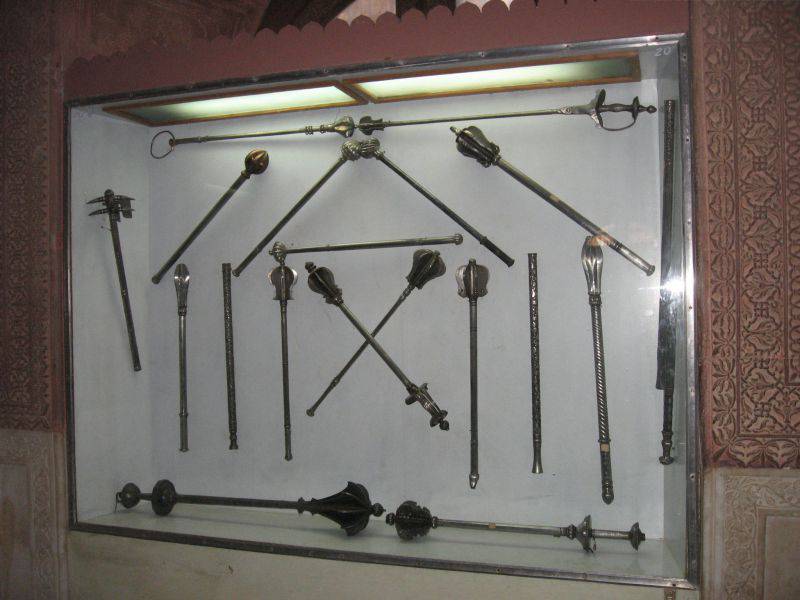
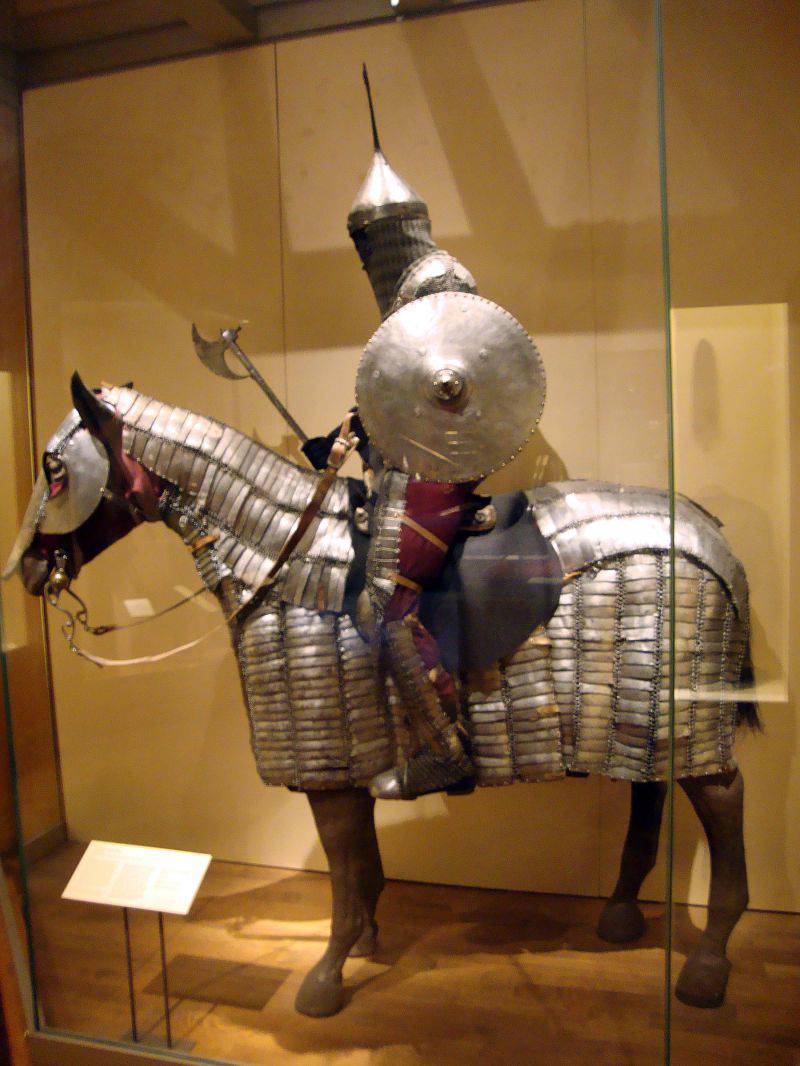
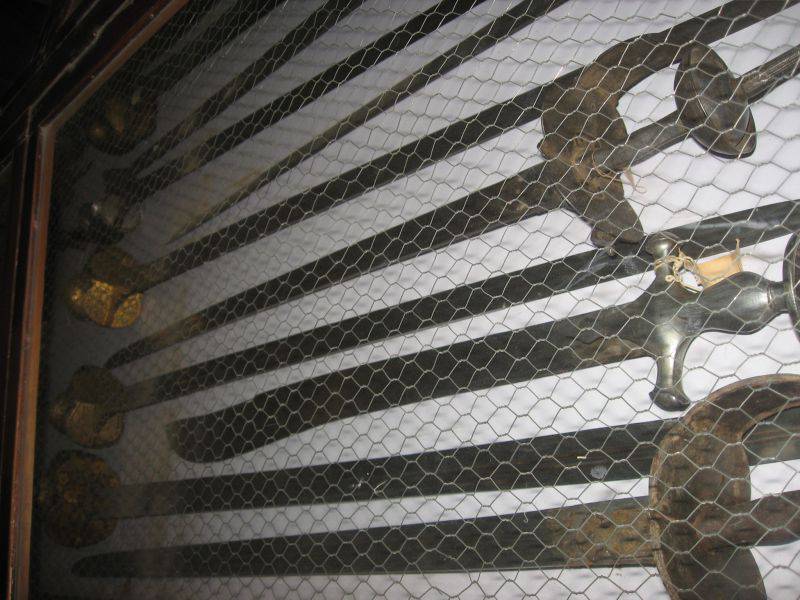
Information